What is an NFT? – Definition, Basic Explanation, Unique Characteristics
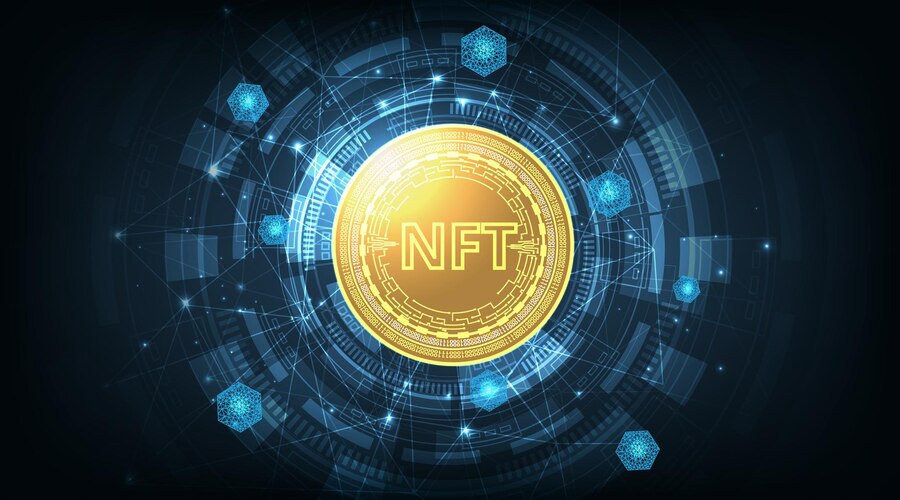
November 08, 2024
I. Introduction
In recent years, the digital world has witnessed the rise of a new phenomenon — NFTs. This abbreviation has become one of the most discussed topics in cryptocurrency, digital art, and investment sectors.
A. Brief Introduction to the Concept of NFT
NFT, or Non-Fungible Tokens, represent unique digital assets that exist on a blockchain. Unlike cryptocurrencies, each NFT is unique and cannot be replaced by another token without changing its value.
B. Relevance and Popularity of NFTs in Today’s Digital World
The popularity of NFTs is skyrocketing. In 2021, the NFT market surpassed $40 billion, attracting attention from artists, musicians, collectors, and investors. NFTs offer new opportunities for monetizing digital content, reshaping the understanding of ownership in the digital space.
II. Definition of NFT
To better understand NFTs, let’s break down the concept in more detail.
A. NFT Abbreviation Breakdown
NFT stands for Non-Fungible Token, where each term carries significant meaning:
– Non-Fungible: this means each token is unique and cannot be replaced by another without altering its value.
– Token: in the context of blockchain, this refers to a unit of value that represents an asset or utility in digital form.
B. Basic Definition of NFT
An NFT is a digital certificate of uniqueness and ownership of a specific digital or physical asset, stored on the blockchain. This certificate can be tied to a digital artwork, music album, video, virtual item in a game, or even a physical object in the real world.
C. Difference Between NFTs and Other Digital Assets
The key difference between NFTs and other digital assets like cryptocurrencies lies in their uniqueness:
1. Uniqueness: each NFT has a unique identifier and metadata, which sets it apart from any other token.
2. Indivisibility: unlike cryptocurrencies, NFTs cannot be divided into smaller parts. You cannot buy or sell a portion of an NFT.
3. Non-Interchangeability: one NFT cannot be easily replaced with another, as you might with cryptocurrencies or fiat money.
4. Proven Ownership: the blockchain provides a transparent and immutable record of NFT ownership, ensuring easy verification of authenticity and ownership.
These unique characteristics make NFTs the ideal tool for representing ownership rights to unique digital or physical assets in the digital world.
III. Basic Explanation of How NFTs Work
To understand how NFTs function, it’s important to look at the technology behind them and the processes involved in their creation and use.
A. Blockchain Technology as the Foundation of NFTs
NFTs exist thanks to blockchain technology — a distributed database that stores information in interconnected blocks. Key aspects include:
1. Decentralization: there is no central control, which ensures security and transparency.
2. Immutability: once information is recorded on the blockchain, it cannot be altered or deleted.
3. Public Nature: all transactions are visible to participants in the network, which promotes transparency.
B. The Process of Creating (Minting) NFTs
The creation of NFTs is called minting. This process involves the following steps:
1. Creation of a digital asset (image, video, audio, etc.).
2. Choosing a blockchain platform (e.g., Ethereum, Solana, Binance Smart Chain).
3. Uploading the asset to the chosen platform.
4. Setting up NFT parameters (name, description, number of copies).
5. Paying the minting fee (also called “gas fee”).
6. Confirming the transaction and receiving a unique token.
C. Storing and Transferring NFTs
After creation, NFTs:
1. Are stored in the owner’s digital wallet.
2. Can be transferred via blockchain transactions.
3. The ownership history and all transactions involving the NFT are recorded on the blockchain and accessible for viewing.
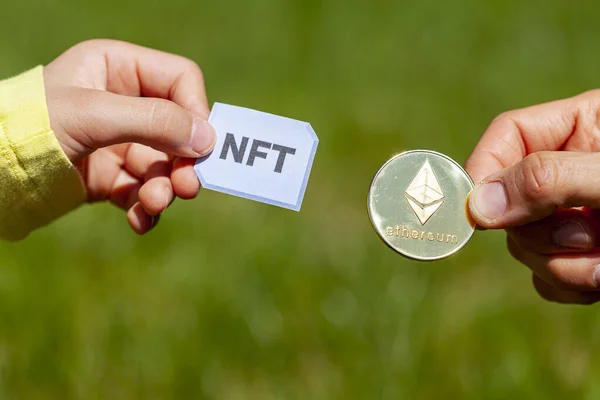
IV. Unique Characteristics of NFTs
NFTs have a number of several unique characteristics that distinguish them from other digital assets.
A. Indivisibility
Unlike cryptocurrencies, NFTs cannot be divided into smaller parts:
1. Each NFT represents a whole unit.
2. You cannot buy or sell part of an NFT.
3. This characteristic emphasizes the uniqueness of each token.
B. Uniqueness and Non-Interchangeability
Each NFT is unique and cannot be replaced by another without altering its value:
1. Each NFT has a unique identifier.
2. Metadata describes the asset associated with the token.
3. It is impossible to directly exchange one NFT for another (unlike cryptocurrencies).
C. Verifiable Ownership
The blockchain ensures transparent and indisputable records of NFT ownership:
1. The ownership and transaction history of each NFT is publicly accessible.
2. It allows easy verification of authenticity and ownership without the need for intermediaries.
By providing digital certificates of ownership, NFTs have revolutionized the way we think about owning and transferring of digital assets, offering new opportunities for both creators and collectors.
1. Every NFT transaction is recorded on the blockchain.
2. The token ownership history is always available for verification.
3. It is easy to verify the authenticity and ownership of an NFT.
D. Programmability (Smart Contracts)
NFTs can incorporate smart contracts, which expand their functionality:
1. Automated execution of specific actions under certain conditions.
2. The ability to embed royalties for creators.
3. Programmable rules for the transfer and usage of NFTs.
These unique characteristics make NFTs a powerful tool for representing ownership in the digital world, opening new opportunities for creators, collectors, and investors.
V. Applications of NFTs
NFTs are used in various fields, unlocking new possibilities for creativity, collecting and investing.
A. Digital Art
1. Artists create and sell digital artworks as NFTs.
2. Examples: digital paintings, animations, 3D models.
3. Notable sale: “Everydays: The First 5000 Days” by Beeple, sold for $69 million.
B. Collectibles
1. Digital collectible cards and figurines.
2. Limited series of virtual items.
3. Examples: CryptoPunks, NBA Top Shot moments.
C. In-Game Assets
1. In-game items as NFTs (weapons, skins, characters).
2. Ability to transfer and sell game assets outside the game.
3. Examples: Axie Infinity, Decentraland.
D. Virtual Real Estate
1. Buying and selling virtual land in metaverses.
2. Renting and developing virtual spaces.
3. Examples: The Sandbox, Cryptovoxels.
E. Other Innovative Applications
1. Music albums and concert tickets as NFTs.
2. Digital IDs and certificates.
3. Tokenization of real-world assets (real estate, luxury goods).
VI. Benefits of Using NFTs
NFTs provide numerous advantages for various participants in the digital economy.
A. For Content Creators
1. Direct monetization of creativity without intermediaries.
2. The ability to earn royalties from secondary sales.
3. Proof of authorship and protection against plagiarism.
4. New formats of audience engagement.
B. For Collectors and Investors
1. Access to a new class of digital assets.
2. Verifiable uniqueness and ownership.
3. Potential for significant value growth.
4. The opportunity to support favorite creators.
C. For Platforms and Marketplaces
1. New business models and revenue streams.
2. Attraction of new audiences interested in NFTs.
3. Reduced fraud risks due to blockchain transparency.
4. The ability to build unique ecosystems around NFTs.
The advantages of NFTs go far beyond these points. As technology evolves, new opportunities for innovation open up across a variety of industries. NFTs have the potential to redefine our understanding of digital ownership and value in the virtual world.
– Creating “digital twins” of physical objects in the form of NFTs.
C. Impact on Traditional Industries
1. Transformation of the Entertainment Industry:
– New monetization models for musicians and filmmakers.
– NFTs as a means of distributing exclusive content.
2. Changes in the Real Estate Sector:
– Tokenization of property rights through NFTs.
– Simplifying the buying, selling, and renting processes.
3. Impact on the Fashion Industry:
– Creation of digital fashion and virtual clothing items as NFTs.
– Using NFTs to verify the authenticity of luxury goods.
4. Transformation of the Gaming Industry:
– Development of the “play-to-earn” model using NFTs.
– Creating cross-game economies based on NFT assets.
The future of NFTs is closely linked to the development of Web 3.0 and the concept of a decentralized Internet. As current issues are addressed and technology advances, NFTs have the potential to become an integral part of the digital economy, changing our understanding of ownership, value, and interaction in the digital space.

IX. How to Get Started with NFTs
For those interested in exploring NFTs, here’s a step-by-step guide:
A. Choosing a Platform
1. Popular Platforms for NFTs:
– OpenSea: the largest NFT marketplace with a wide variety of categories.
– Rarible: a platform for creating and trading NFTs with its own token.
– NBA Top Shot: a specialized platform for collecting NBA moments.
– Foundation: a curated platform for digital art.
2. Factors to Consider When Choosing a Platform:
– The type of NFTs you want to work with.
– Transaction and listing fees.
– User interface and functionality.
– Popularity and liquidity of the platform.
B. Creating a Digital Wallet
1. Popular Wallets for NFTs:
– MetaMask: The most widely used wallet for Ethereum and compatible networks.
– Coinbase Wallet: A wallet from a major cryptocurrency exchange with NFT support.
– Trust Wallet: A mobile wallet with broad support for various blockchains.
2. Steps to Create a Wallet:
– Download and install the chosen wallet.
– Create a new account and save the seed phrase securely.
– Fund the wallet with cryptocurrency (usually ETH) to pay for transactions.
C. Buying and Selling NFTs
1. Buying NFTs:
– Select an NFT on a marketplace.
– Ensure sufficient balance to cover the purchase and transaction fees.
– Confirm the transaction in your wallet.
2. Selling NFTs:
– Upload a digital asset to the chosen platform.
– Set the price and terms of sale.
– Sign the NFT creation transaction in your wallet.
3. Important Points:
– Always verify the authenticity of the NFT before purchasing.
– Consider gas fees when planning transactions.
– Be prepared for price volatility in the NFT market.
X. Conclusion
A. Summary of Key Points
1. NFTs are unique digital tokens representing ownership of digital or physical assets.
2. Key characteristics of NFTs: uniqueness, indivisibility, and verifiable ownership.
3. NFTs are applied in art, collectibles, games, virtual real estate, and more.
4. The technology offers new opportunities for monetizing creativity and investment.
5. There are challenges related to environmental impact, regulation, and NFT security.
B. The Importance of NFTs for the Digital Economy
1. NFTs are transforming the concept of digital ownership and value.
2. They open up new business models and monetization opportunities in the digital space.
3. NFTs contribute to the development of the creator economy.
4. They play a vital role in the emergence of Web 3.0 and the decentralized Internet.
C. Encouragement for Further Exploration
The world of NFTs is rapidly evolving, offering new opportunities and challenges. For those intrigued by this technology, it is recommended to:
1. Stay up to date with NFT news and trends.
2. Experiment with creating and collecting NFTs.
3. Participate in NFT-related discussions and communities.
4. Critically assess potential investments and risks.
NFTs represent an exciting intersection of technology, art, and finance. Understanding how NFTs work and their potential can open new horizons in the digital world of the 21st century.
We thank all our investors and community members for their trust and ongoing support. Together, we are not just growing cannabis; we are growing a vibrant, innovative community that values transparency, security, and shared success.
https://polygonscan.com/address/0x4c1b0dff6de00b0d5a1dcb1400719e9d8123a978
Other News
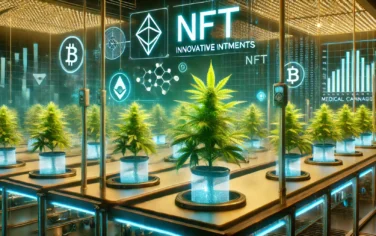
Introduction: A New Era of Investment Opportunities 2025 ushers in unprecedented opportunities for investors in the rapidly growing medical cannabis sector. According to Grand View Research, the global medical cannabis market is on the brink of historic growth, with a projected value of $346.2 billion by 2030. A steady annual growth rate of 14.9% makes […]
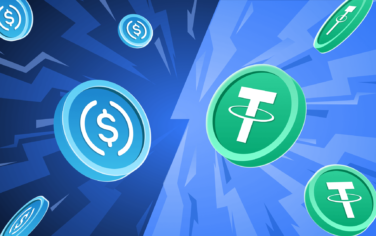
About the Transition to USDC As of December 30, 2024, Tetra Farm has fully transitioned from USDT (Tether) to USDC (USD Coin). This change applies to all financial operations within the project, including: Purchasing NFTs Profit distribution to project participants All internal transactions Reasons for Transitioning to USDC Compliance with New EU Regulations With the […]
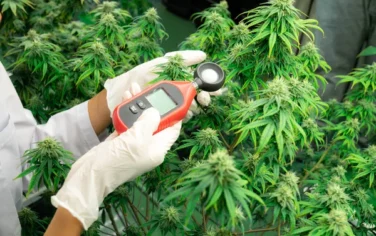
Introduction Laura Stewart, a professor at the University of Northern Colorado, has been studying the impact of physical exercise on immunity for over 20 years. However, her interests have shifted towards the relationship between cannabidiol (CBD) and immune system function in the last decade. The scientist is captivated by this topic, as she has discovered […]

